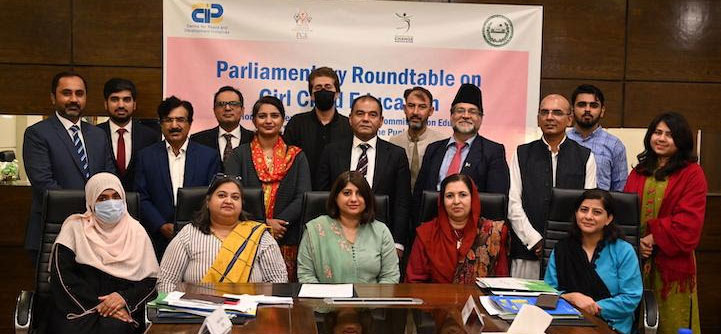By: Syed Ahsan Shah
The world is looking forward to the Islamic paradigm and bold decisions of the Taliban to address the looming dilemma of girls’ education in the country. Already struggling with a high proportion of out-of-school girls; new restrictions will end up worsening the crises. Sadly, more than 2.2 million Afghan girls are unable to attend schools, survey conducted by a pioneer organization. Additionally, more than 50 percent of the girl schools lack stable building for smooth continuity of education. Appallingly, Afghanistan, surrounded by developing neighbours and remaining under the scourge of external intervention and civil war for more than four decades cannot afford further restriction on girls education, the key driver for fighting social and economic evils in the society.
Already struggling with a high proportion of out-of-school girls; new restrictions will end up worsening the crises. Sadly, more than 2.2 million Afghan girls are unable to attend schools, a survey conducted by pioneer organizations.
Ironically, the gradual panorama of the Taliban’s focus toward girl education is unfolding with harsh restrictions: introducing gender-segregated classrooms, abandoning the university girls of higher education and implementing punitive measures on girls veil (purdah). Since the Taliban took control of the country, many small girls get disconnected from their studies as the majority of the schools get closed. Taliban leaders iterated on many occasions that they are seeking a “safe learning environment” for the resumption of educational activities. But what that safe environment means is a big question mark.
Moreover, young girls in the city of Herat, lying west of the country, are eying at the Taliban government for the opening of schools. Similarly, parents are desperate, looking their children are dragged away from their fundamental rights. More than thousands of schools working actively before the Taliban are unable to continue. Ostensibly, not allowing girls to get education will hit the county hard, already striving for global acceptance and foreign aid.
A universally accepted survey declares that countries with fully educated girls can increase their GDP by 10 percent in a decade. Also, girls, having done their secondary education can earn twice as those who do not. For developing countries like Afghanistan, girls’ education seems urgent focus to uphold women rights. Today, more than 33 perc of the girls get married before 18 in Afghanistan that shows a generation of the country is moving toward ignorance. Only, well literate girls with adequate access to education and other fundamental human rights can stand against the societal odds; early marriages, domestic violence and defiance against their universally declared rights.
Since their emergence, the Taliban having strong religious and ideological beliefs claimed that the Islamic Emirate of Afghanistan will hold women’s education its main priority. However, their [Taliban] move toward girls education paints a bleak picture of hopelessness and lack of strategies for the way forward. Shockingly, the leaders in Kabul are not allowing full-flung girls’ education in the country with subjection to Islamic law. Nevertheless, Islamic law never abandons girls from getting an education says, Islamic scholars and educationists. It rather signifies the importance of maximum literate girls in society.
Not only in Afghanistan many Muslim countries are facing it difficult to maintain girl literacy rate high. But Indonesia is working remarkably to improve girls education. Horrific statistics of out-of-school girls, impacting their sustainable goals, has forced leaders in Jakarta to introduce a network of madrassah for educating girls. Like boys’ madrassahs, there are various girls-dominated madrassahs. To further improve the quality of education, several government schools are established in the vicinity of madrassahs. Indonesian new educational model, primarily focusing on girls education has lessons for Taliban leaders. Following the same paradigm, the Taliban can educate millions of girls.
It seems challenging for the Taliban to undermine its economic crises and growing governance issues without global recognition and regional aid. For that Taliban needs to make sure that under their regime human rights of the common masses are protected. Taliban, for instance, having full diplomatic and strategic control over the country can devise and implement a holistic approach for educating the girls, something that is frequently claimed by their leaders in the past. Surely, it will maximize their chances of engagement with the outer world.
The writer is a student of mechanical engineering at UET Taxila. He frequently writes on current political and social issues. He can be reached at [email protected]








